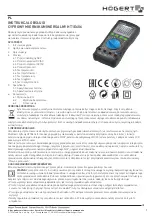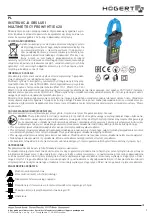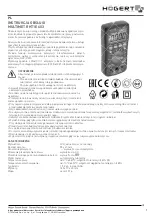
B. Standards Compliance for SNMP Traps
B-2
April 2003
8799-A2-GB20-10
linkUp and linkDown
The link SNMP traps are:
linkUp
– The card recognizes that one of the communication interfaces is
operational.
linkDown
– The card recognizes that one of the communication interfaces is
not operational.
The network and synchronous port interfaces (physical sublayer) are represented
by an entry in the MIB-II interfaces table and supported by the DS1 MIB.
The following list describes the conditions that define linkUp and linkDown:
linkUp/Down Variable-Bindings
ifIndex (RFC 2863 (was 1573))
This object provides the index into the ifTable and potentially into tables in other MIBs.
The ifIndex included with the trap consists of the slot number times 1000, plus:
– 2
Backplane HDLC Interface
– 3 – 10
DSL E1 Interface, Port 1 – Port 8
– 15 – 22 G.703, Port 1 – Port 8
– 39 – 46 EOC management link, DSL1– DSL8
ifAdminStatus (RFC 2863). This object specifies the desired state of the interface:
– up(1)
DSL: DSL link is enabled.
G.703: G.703 interface is enabled.
– down(2)
DSL: DSL link is disabled.
G.703: G.703 interface is disabled.
– testing(3)
A test is active on the interface (currently not supported).
ifOperStatus (RFC 2863). This object specifies the current operational state of the
interface:
– up(1)
DSL: DSL link is established.
G.703: No alarm condition exists.
– down(2)
DSL: DSL link is not established.
G.703: An alarm condition exists.
– testing(3)
DSL: DSL link is in Test mode.
G.703: G.703 interface is in Test mode.
– dormant(5)
DSL: DSL link is in training.
i
fType (RFC 2863). This object is the type of interface:
– e1(19)
Used for the G.703 E1 interface.
– shdsl (169)
Used for the DSL interface.
















































